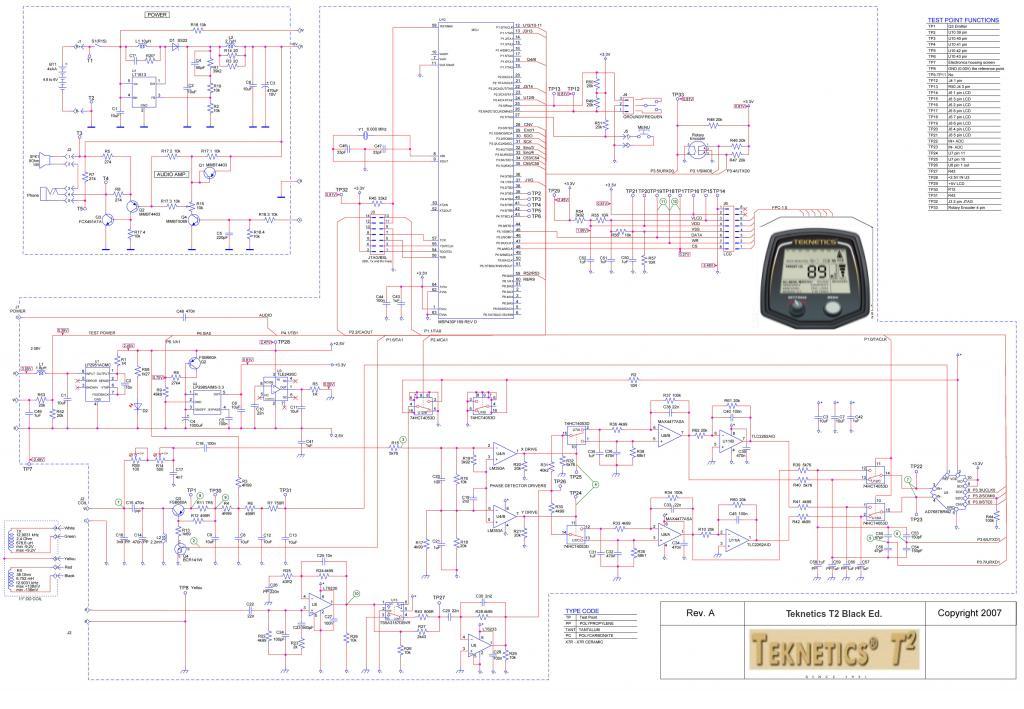Hello schematic t2 tranks
Announcement
Collapse
No announcement yet.
Hello
Collapse
X
-
Thanks for posting that, WM6. I have a Fisher F75, and was curious about the different coil drive circuitry, and pre-amp gains, between the two machines. But I can't make out enough detail, do you have a higher resolution version of the schematic, or a link to where it may be found ?
Comment
-
https://md-arena.com/razborka-garret...ema-detektora/
ahaha! i read comments - look Minelab renamed Go Find 20/40/60 in Go Find 22/44/66 added a sticker and "explained in words" that "the device is completely new software"!
And all at once believed! That's what the Life-Giving Marketing does!
Comment
-
It is at max resolution what I have. Sorry.Originally posted by Skippy View Post
But I can't make out enough detail, do you have a higher resolution version of the schematic, or a link to where it may be found ?
But maybe this F75, you interested, could be a bit better in resolution for additional magnification (click on scheme for max res.):
http://mdrussia.ru/uploads/monthly_2...8355d54071.jpg
Comment
-
I have the F75 schematic, both my own reverse-engineered one and the one circulating on Russian sites.
I've never seen a T2 one before, so I was wanting to compare them. The T2 has a centre-tapped TX coil, to get high drive from a low supply voltage. The F75 has an unusual 'double-tuned' TX arrangement, and a conventional single-ended TX coil winding. This gives a 50% increase in coil drive, but still seems to leave it weaker than the T2. The extra 35% must come from the front end receive amplifier circuit. This appears to be 'badly designed' in the F75, I think as a result of simply changing the T2 amplifier gain.
Comment
-
https://md-hunter.com/coils-under-x-...un-out-of-tin/
Coils under X-Ray. Has somebody run out of tin? ))
Does a coil have a booster inside or not? Only the good old X-ray can give the most accurate answer to this question. How exciting it is to look at these radiographs! Some manufacturers don’t even try to solder the wires inside the coil – they connect these ones by twisting them together (no one can see it anyway). Or maybe they are simply run out of tin?
Comment
-
https://md-hunter.com/opening-the-te...-photo-review/
Opening the Teknetics T2 (original). Photo review
Here’s a photo review of the Teknetics T2 teardown. It’s an original, not Chinese made, machine. The peculiarity of the T2 unit lies in the fact that Chinese are producing the Teknetics T2 copies that are hardly distinguishable from the originals. It’s also very hard to spot the differences in electronics (but still possible).
Comment
-
The T2 schematic looks to have a number of errors in it, hard to tell with such bad resolution. T2 uses a CT coil on the TX, driven fully differential by a PNP diffpair. There is no transformer. The F75 has a single-ended TX coil and drive circuit, but does include a series resonant booster.
Comment
-
That's exactly what I was seeing, Carl, absence of centre-tapped coil drive. Which is why I was looking for a better source, such as Russian forums. I have no Russian language skills .... Da, nyet, Novichok, glasnost, perestroika, that's all, so attempting to hunt it down on places like md4u is not viable.
Comment
-
Carl, you are correct. My memory is a bit faulty at times. I went back into my notes, and I thought he was talking about a small transformer which increased the power of the T2 coil. Here is what he said:
Quote:
I have not forgot, just last week I was looking into that some more but I just keep getting side tracked into other things. I saw the schematic for a Teknetics T2. Not much to the thing compared to the older detectors. About 85% of it is the microcontroller chip. The detector analog operates on 5 volts and the digital operates on 3.3V. Pretty typical stuff, we use the same voltages and chip in some of our designs at work. Most of the work is in writing the firmware. I can tell it was designed by the same person who made the Troy X5. It’s a neat trick to boost the transmit output by using an internal parallel resonant inductor on the board and connecting the transmit coil in series resonance. Don’t need a higher voltage to get more output that way.
UnQuote:
There you have it, he is pretty good at understanding how metal detector designs work. He also writes micro code. Smart guy. Is in this forum sometimes.
Melbeta
Comment


Comment